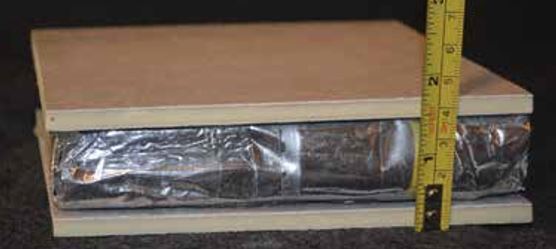In August 2014, I purchased the assets of a fourth-generation, 133-year-old roofing contracting company with which I had been competing locally for a few years. As a relatively new contractor in the area (I had been in business just under nine years), I wanted a larger share of the commercial roofing market. The clients I hoped to inherit with this acquisition would help me to accomplish that goal.
I had no formal business training, nor knowledge of how to make such a merger work. I started my company with very little industry experience back in 2005; I had a working knowledge of roofing and a desire to be my own boss. Things had gone well, so I trusted that my instincts would guide me through the merger. I was operating on nothing more than a gut feeling that this merger would be a good thing and a blind assumption that I would be able to handle whatever challenges might come my way.
I began the dialogue with the company’s owner in early 2013 and it took until August 2014 to close the deal. There were plenty of challenges created by this process—definitely some things I handled well and some I did not.
The primary goal of this acquisition was to retain the company’s customer base, thus growing my own. Relationships were in place that went back years, even generations, and maintaining those relationships was of utmost importance. I had a plan in place to personally visit with or reach out to all of these customers within the first two weeks. I thought this would be one of the main challenges—certainly the most important thing to get right—but, surprisingly, it was one of the easiest things to achieve. The previous owner assured these customers I would continue to take care of them well and I think these customers’ trust and loyalty already was so solid that the accounts transferred over to me almost without question. As planned, I personally met most of my new customers within the first couple weeks, continued to serve their needs with the same people and took care of them with the same high level of service to which they had become accustomed. I am proud to say, after six months, we have retained 100 percent of these customers.
I am fond of saying, “I don’t know much, but I know exactly what I don’t know.” It’s the tenet to which I attribute what modicum of success I have had. I knew that I did not know how to manage a process like this! It was definitely a good move on my part to work with a consultant. It did not answer all the questions, nor did it eliminate all mistakes, but the insight and advice of someone who had been through similar processes was invaluable.
Before we closed on the deal, I told myself that despite what problems, issues or frustrations might arise, I would treat the first five months as an observational period rather than a time to implement changes. I was patient and held true to that timeframe. Trust takes a while to establish and people take a while to know. I am glad I waited to learn what I needed to know before making any significant changes.
The biggest challenge the merger created was in dealing with the significant increase in my employee count and all the associated human-resource issues that resulted. I had kept my business pretty light on hourly employees in the field, whereas the company I purchased had close to 30 full-time roofers. I had written an employee handbook prior to the merger but many of the policies had not yet been questioned or tested. Of course, in the first few days after the merger, I had a wave of guys coming at me with issues and problems with the new systems to which they would be subjected. I modified a few policies based on legitimate concerns and to ease the transition while I held firm on others. I should have had clearly defined and time-tested policies in place, so I would have been better prepared for the questions I was asked.
In hindsight, I think the biggest mistake I made was to agree to keep this sale completely confidential until the deal was confirmed and I had officially taken over. This meant the first time I met any of the employees they were already on my payroll. There had been no opportunity to meet existing employees, interview the office staff, or gain any insight into systems and processes prior to the day of the merger. I basically had to jump right in! That could have been avoided and would have prevented a lot of stress and at least one early layoff I had to make.
I should definitely have hired, if only temporarily, an additional office person to assist with the mountain of paperwork that was created. We used a Small Business Administration loan to finance the purchase, which added significantly to an already overwhelming workload. A backlog of paperwork was created that took a few months to sort out.
Although I do not consider the merger process completed, we are definitely over the hump and, despite a few challenges, it has turned out as I hoped it would. Our commercial revenues have increased as forecast and I feel good about the fact that, had I not purchased this business, the employees I gained would be unemployed right now. Instead, they are part of a growing company that aims to provide long-term security for them and their families.
Twice in the same day earlier this month I was asked, “What one thing have you learned from the process of buying another business?” I did not have a clue how to answer that question. Certainly I have learned a great many individual lessons and become the wiser for it, but I’m not sure how to boil it down to one thing. I guess it can be summed up with my favorite cliché:
“That which does not kill you makes you stronger.” Mistakes are inevitable, and they are good. If you are afraid to make them, you will accomplish nothing. You will learn way more from one mistake than you will from 10 good decisions. People will not notice your mistakes nearly as much as you think. So don’t hesitate; make the call; learn from it if you can; and move on.
On a personal note, I owe a very heartfelt and big thank you to Horace Thompson King III (Tommy) for being such a pleasure to work with and for making a difficult process much easier than it could have been.



Be the first to comment on "Lessons Learned During a Merger"